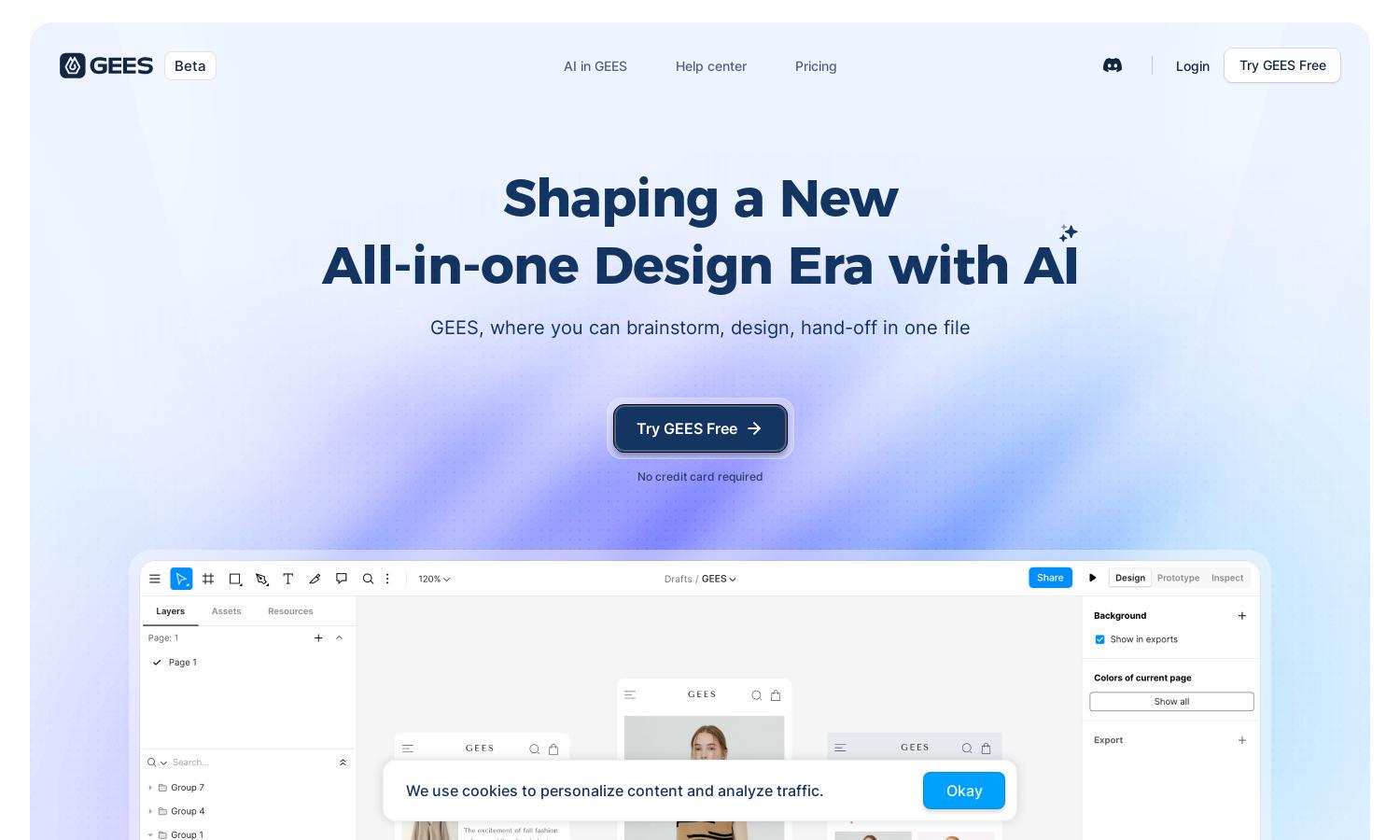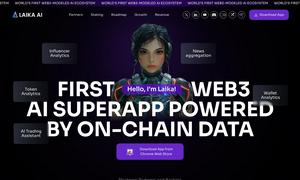Gees

About Gees
Gees is an all-in-one AI design platform that facilitates seamless collaboration in UI/UX and graphic design. With integrated tools for brainstorming, prototyping, and handoffs, it empowers users to craft polished products efficiently. This innovative platform helps teams streamline their workflows, enhancing creativity and productivity.
Gees offers a free version with no credit card required, along with premium plans that unlock advanced features. Each subscription tier provides valuable tools to amplify the design process, making it easy for users to upgrade for enhanced capabilities that cater to diverse design needs.
The user interface of Gees is intuitively designed for ease of navigation, featuring a clean layout that enhances user experience. Its unique modes allow different roles to work simultaneously within the same file, making collaboration seamless while ensuring all users can easily access and utilize essential features.
How Gees works
Users begin with Gees by signing up for a free account, gaining access to powerful design tools. They can create and switch modes effortlessly, facilitating real-time collaboration across design and marketing teams. With its AI-powered features, users can generate components and manage workflows efficiently, ensuring a streamlined design process.
Key Features for Gees
AI Workflow Integration
Gees features AI workflow integration, allowing users to combine various AI blocks into custom workflows. This innovation empowers users to address complex design tasks efficiently, making the entire process more intuitive and tailored to individual needs, enhancing overall productivity.
Real-time Collaboration Modes
Gees offers multiple collaboration modes that enable real-time editing tailored to different team roles. By allowing designers to work in edit mode while marketing teams utilize feedback tools, Gees enhances team dynamics and promotes seamless communication throughout the design process.
Code-free Prototyping
With code-free prototyping, Gees simplifies the transition from design to implementation. Users can create interactive prototypes quickly, allowing for immediate feedback and adjustments without the hassle of coding, making the design process more accessible for all team members.
You may also like:








